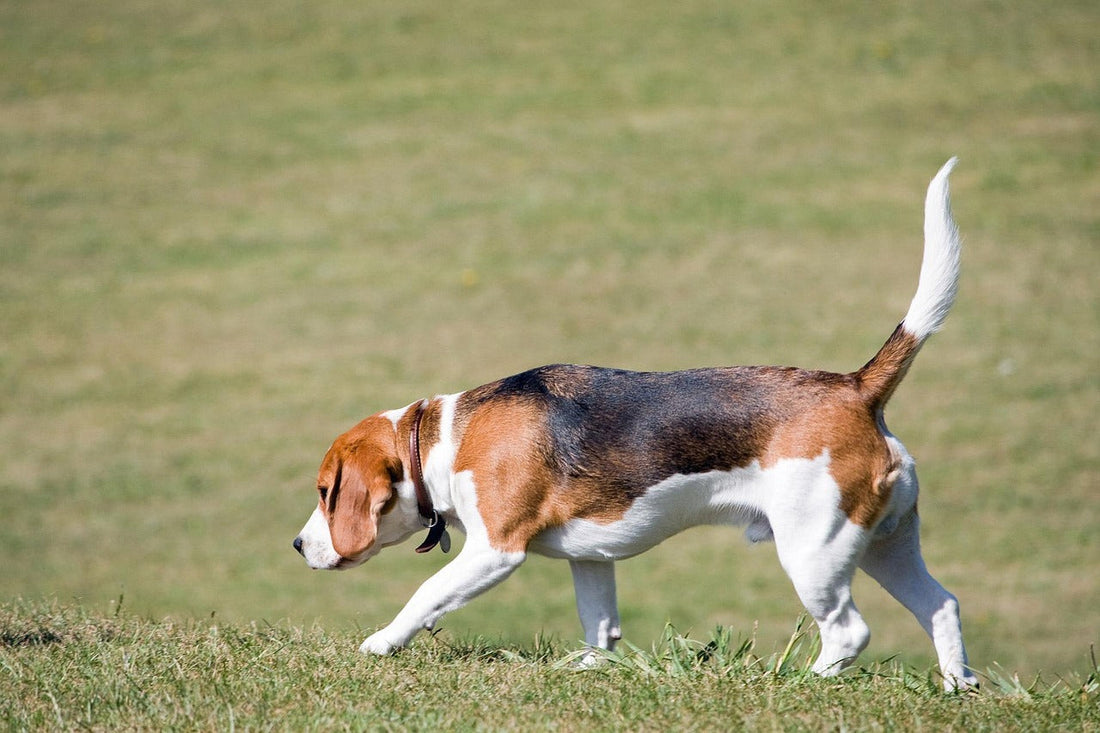Country of Origin: Great Britain
Height: Two varieties – 13-inch and 15-inch
Weight: Approximately 22–35 pounds
Coat: Close, dense, hard, weatherproof, medium length
Colours: Any traditional hound colour
Other Names: English Beagle
Recognised By:
-
AKC: Hound Group
-
UKC: Scenthound Group
🕰️ Origin and History
The Beagle is a proud British breed with roots tracing back to Celtic times. These early small hounds were used for hunting hares across the British Isles and Wales. Renowned for their pack-hunting abilities and tenacious scent-tracking, Beagles have long been valued as excellent hunting companions.
In King Henry VIII’s time, Beagles were so small they were carried in hunters' sleeves or saddlebags. However, their size was eventually deemed impractical, and the breed evolved into the larger form we know today.
During Queen Elizabeth I’s reign, Beagles faced a decline in popularity as fox hunting gained favor over rabbit hunting. Fortunately, rural farmers in southern England and Wales kept the breed alive for practical hunting purposes. In the late 1800s, the Beagle Club in England helped standardise the breed.
Beagles arrived in the United States as early as the Colonial period, but it wasn’t until the 1880s, with additional imports from England, that breed standards became consistent. Their lovable nature, compact size, and strong scenting skills have made them a favourite ever since — even inspiring Snoopy from Peanuts!
🐕 Personality Traits
Playful, Curious, and Charming
Beagles are known for their friendly, self-assured personalities. Their tails rarely stop wagging, and their natural curiosity makes them eager explorers — sometimes to a fault.
They are:
-
Affectionate and social: Beagles thrive on companionship and generally get along well with children, other dogs, and even cats (with proper socialisation).
-
Vocal: Their signature baying voice is beloved by hunters, but may be less appreciated by neighbours. Beagles use their voice when excited, anxious, or bored.
-
Stubborn but smart: Though intelligent, Beagles are easily distracted by scents. With food-motivated training, however, they can become well-mannered companions.
🧼 Grooming & Shedding
Do Beagles Shed?
Yes — Beagles are moderate shedders. Their short, dense double coat thickens in winter and sheds more heavily in the spring.
Grooming Tips:
-
Weekly brushing helps reduce shedding.
-
Clean their ears regularly to prevent infection.
-
Wipe under the eyes to avoid buildup in their looser facial skin.
-
Bathe only as needed — Beagles are relatively clean dogs.
🏃 Exercise & Activity
How Much Exercise Do Beagles Need?
Beagles require at least 60 minutes of daily exercise, preferably broken into a few walks or play sessions. Because they’re natural scent-hounds, walks should be engaging and secure — a Beagle on a scent trail might forget they were ever on a leash!
Beagle-friendly activities:
-
Nose work games
-
Puzzle toys
-
Fetch or tug-of-war
-
Agility training (great for mental stimulation)
📏 Size & Weight
How Big Do Beagles Get?
There are two size varieties:
-
13-inch Beagle: Up to 13 inches tall; weighs 22–30 lbs
-
15-inch Beagle: Between 13 and 15 inches tall; weighs 25–35 lbs
They are sturdy, compact dogs — small enough for apartment living but athletic enough for active households.
❤️ Lifespan & Health
How Long Do Beagles Live?
Beagles live an average of 12–14 years. With proper care, diet, and regular vet checkups, many live well into their teens.
Common Health Considerations:
-
Ear infections (due to floppy ears)
-
Obesity (watch those treat portions!)
-
Hypothyroidism
-
Epilepsy
-
Intervertebral disc disease (IVDD)
🐾 Is a Beagle Right for You?
Beagles make excellent family pets for households that can offer:
-
Plenty of time and attention
-
Secure outdoor space or leash walks
-
Patience during training
-
Companionship — Beagles do not like being alone
Their joyful spirit, keen nose, and affectionate nature make Beagles one of the most beloved breeds around the world.

